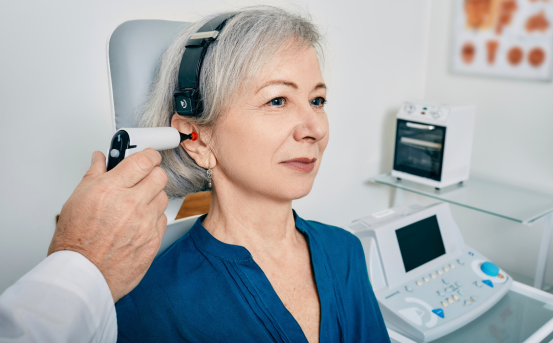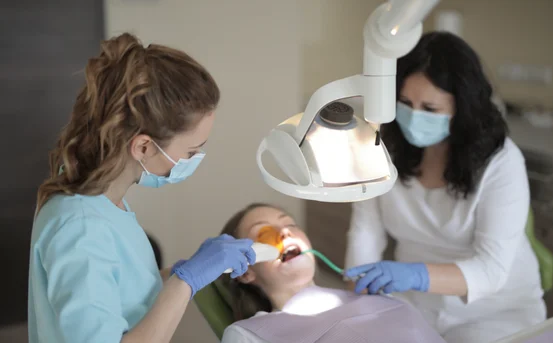Ear drum repair surgery, medically known as a tympanic membrane perforation, can cause discomfort, hearing issues, and increase the risk of infection. When the condition does not heal on its own or leads to recurring symptoms, eardrum repair surgery, also called tympanoplasty, may be recommended. But how is the need for this surgery diagnosed?
In many cases, minor eardrum perforations can heal on their own with conservative treatment. However, when the damage is severe, chronic, or accompanied by repeated infections, eardrum repair surgery medically known as tympanoplasty may be recommended. But before undergoing surgery, a thorough diagnostic process is essential to confirm the severity of the perforation, assess hearing loss, and rule out other underlying conditions that may affect treatment.
What is an Ear drum repair surgery?
The ear drum, or tympanic membrane, is a thin membrane that separates the outer ear from the middle ear. It plays a vital role in hearing by transmitting sound vibrations from the air to the tiny bones in the middle ear.
Damage to the eardrum may be caused by :-
-
Ear infections (otitis media)
-
Trauma or injury (e.g., from cotton swabs, accidents, or loud noises)
-
Rapid pressure changes (barotrauma from flying or diving)
-
Foreign objects in the ear
-
Previous ear surgeries
In many cases, a small perforation in the eardrum heals on its own. However, if the hole persists or causes chronic symptoms, surgical repair may be required.
Symptoms That May Indicate a Damaged Eardrum
If you experience the following symptoms, you may have a perforated eardrum and should seek medical attention :-
-
Hearing loss in one ear
-
Ear pain or discomfort
-
Fluid discharge (clear, bloody, or pus-like)
-
Tinnitus (ringing or buzzing in the ear)
-
Recurring ear infections
-
Dizziness or balance issues
These symptoms prompt an ENT (ear, nose, and throat) specialist to begin diagnostic tests to determine the extent of damage and evaluate if eardrum repair surgery is necessary.
Diagnosis for Ear drum Repair Surgery
Diagnosing the need for eardrum repair involves a combination of physical examination, hearing tests, and imaging studies. Let’s take a detailed look at each step of the diagnostic process.
Medical History and Symptom Evaluation
The first step is a detailed discussion about your symptoms, medical history, and previous ear infections or trauma. Your ENT specialist will ask questions such as :-
-
When did your symptoms start?
-
Have you had ear infections in the past?
-
Have you experienced sudden hearing loss or discharge?
-
Are you exposed to loud noises regularly?
-
Have you had ear surgery before?
This helps narrow down possible causes of the eardrum damage and assess the likelihood of natural healing.
Otoscopic Examination
An otoscope is a device that allows doctors to look inside the ear canal and view the eardrum. This visual inspection helps identify :-
-
Size and location of the perforation
-
Presence of fluid or infection
-
Signs of chronic ear disease
-
Scarring or previous surgical changes
A perforated eardrum is usually visible during this exam. The specialist may also use a pneumatic otoscope to observe how the eardrum moves in response to air pressure lack of movement can indicate fluid behind the eardrum or stiffened tissue.
Audiometry (Hearing Test)
A hearing test or audiometry is essential for assessing the impact of the eardrum damage on your hearing ability. The test is typically performed in a soundproof room using headphones and different sound frequencies.
The audiometry test measures :-
-
Air conduction and bone conduction thresholds
-
Speech recognition ability
-
Type and degree of hearing loss
Results help determine whether the hearing loss is conductive (related to the eardrum or middle ear) or sensorineural (related to the inner ear or auditory nerve). Tympanoplasty is often effective in treating conductive hearing loss caused by a perforated eardrum.
Tympanometry
Tympanometry is a test that evaluates the function and mobility of the middle ear and eardrum in response to changes in air pressure. A probe is inserted into the ear canal to generate sound and air pressure.
This test helps detect :-
-
Perforations
-
Fluid behind the eardrum
-
Eustachian tube dysfunction
-
Stiffness of the middle ear bones
An abnormal tympanogram result supports the diagnosis of a perforated eardrum and provides additional data for surgical decision-making.
Imaging Tests (If Needed)
In certain cases, especially if the eardrum has been damaged for a long time or if complications like cholesteatoma (abnormal skin growth in the middle ear) are suspected, imaging tests may be recommended:
-
CT scan (Temporal Bone CT) :- Provides detailed images of the ear bones, mastoid air cells, and middle ear structure. Useful before complex or revision ear surgeries.
-
MRI scan :- Occasionally used if inner ear abnormalities or tumor-like conditions are suspected.
These tests help the surgeon assess the extent of damage and plan the most appropriate surgical approach.
When Is Ear drum Repair Surgery Recommended?
Based on the diagnosis, eardrum repair surgery tympanoplasty may be advised if :-
-
The perforation has not healed after 2–3 months
-
There is significant or worsening hearing loss
-
Repeated middle ear infections are occurring
-
There is persistent fluid discharge from the ear
-
The patient is unable to swim or fly due to ear pressure sensitivity
-
A cholesteatoma or other structural complication is present
In children, surgery is often delayed until after age 6 unless symptoms are severe. In adults, the decision is based on functional impact and infection risk.
Types of Tympanoplasty Procedures
Depending on the size and location of the eardrum perforation and whether the middle ear structures are also involved, the following types of tympanoplasty may be performed:
-
Type I (Myringoplasty) :- Repair of the eardrum only
-
Type II-IV Tympanoplasty :- Repair of both the eardrum and ossicles (small middle ear bones)
The procedure is typically done under general anesthesia, with recovery taking a few weeks. Most patients experience improved hearing and reduced infections after surgery.
Preparing for Surgery After Diagnosis
Once surgery is recommended, your ENT surgeon will guide you through :-
-
Pre-operative blood tests
-
Hearing and balance evaluations
-
Consent and anesthesia discussion
-
Instructions for medications to avoid before surgery (e.g., blood thinners)
-
Planning for post-operative care
Conclusion
Early and accurate diagnosis is critical for successful eardrum repair surgery. ENT specialists use a combination of clinical examination, hearing tests, and imaging studies to determine the necessity of tympanoplasty. If you are experiencing symptoms like hearing loss, persistent ear discharge, or repeated infections, don’t delay in seeking an evaluation.























